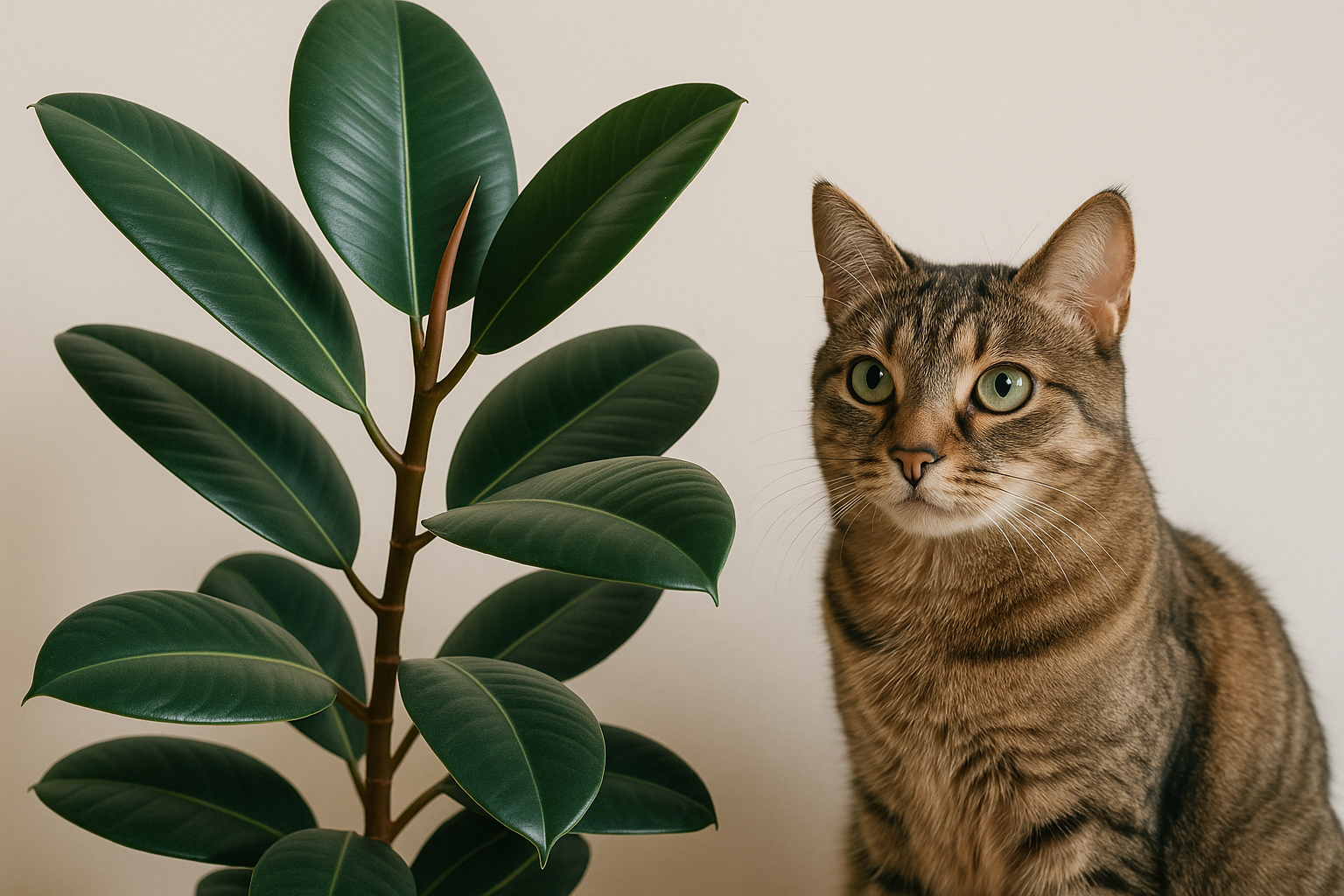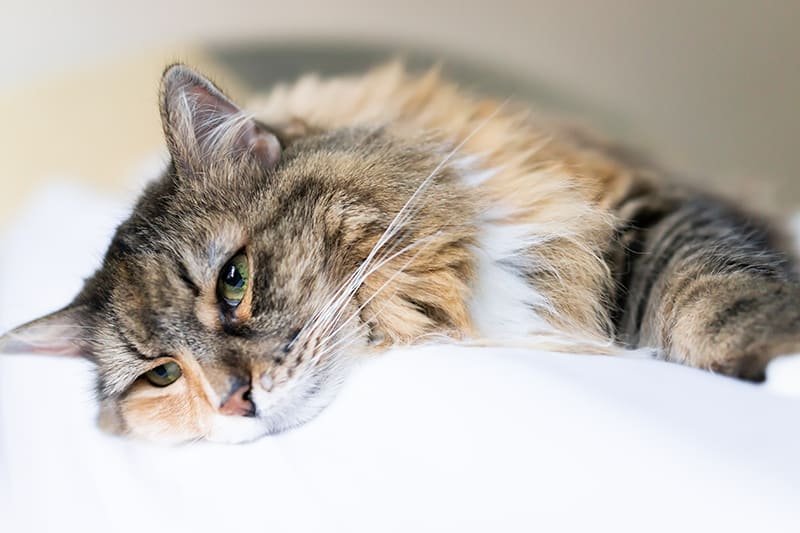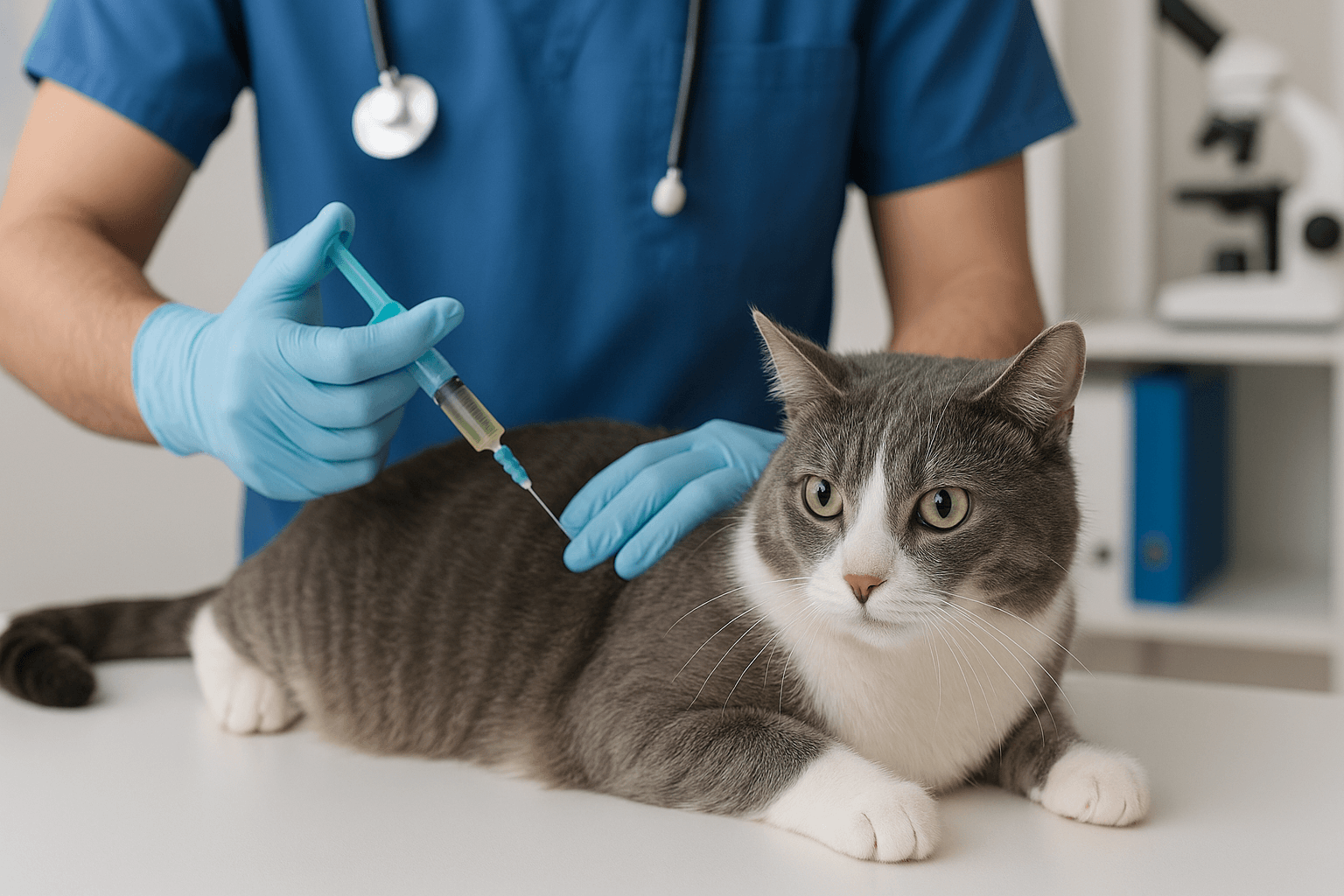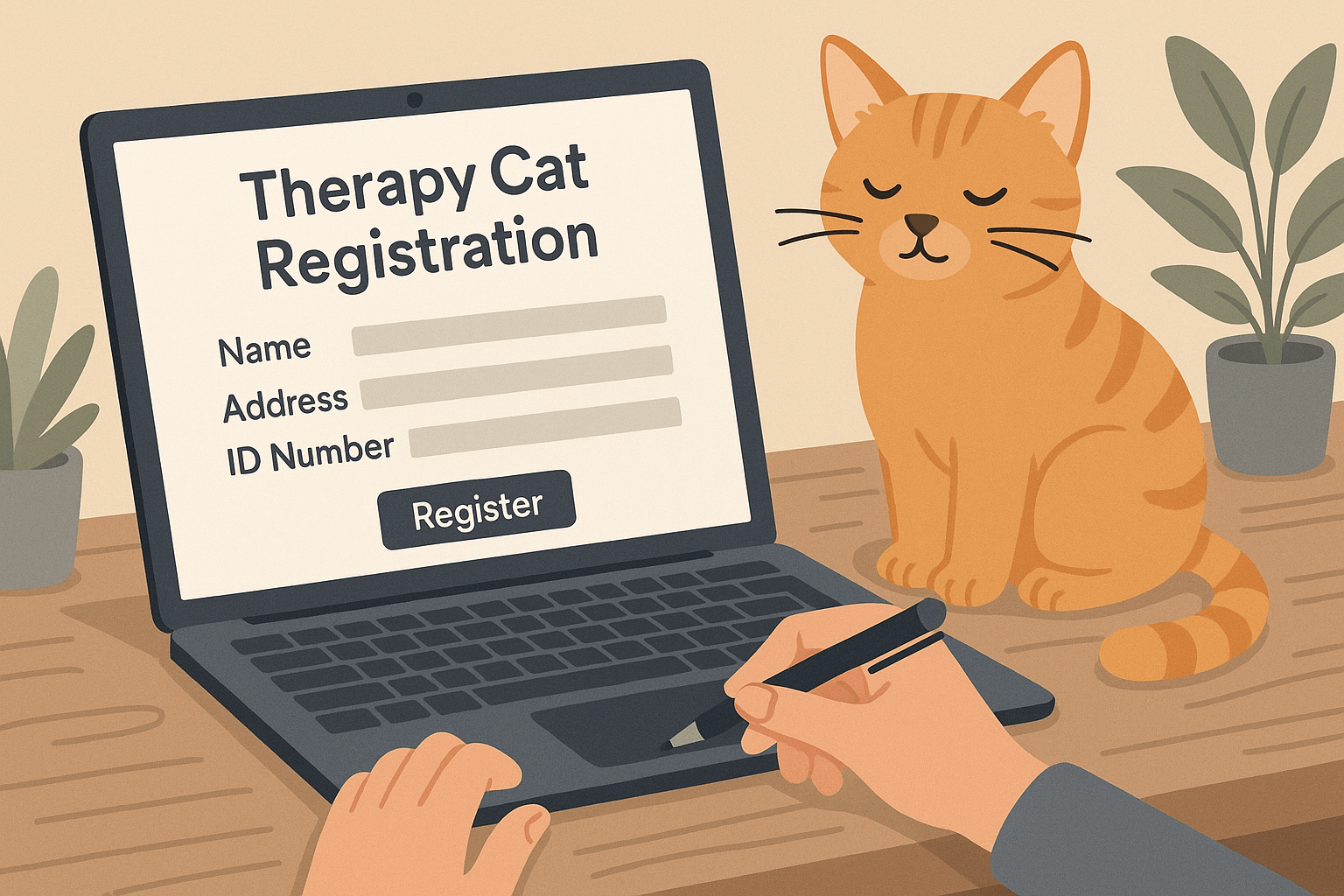Can Cats Eat Zucchini?
When it comes to feeding our feline friends, many pet owners are curious about introducing vegetables into their cat’s diet. Zucchini, a popular vegetable in human meals, often sparks questions about its safety and nutritional value for cats. While cats are obligate carnivores, meaning their primary diet should consist of meat, certain vegetables like zucchini can be safely offered as occasional treats. But how do you know if zucchini is a good fit for your cat? In this blog post, we’ll explore whether cats can eat zucchini, the potential benefits, risks, and tips for incorporating it into their diet responsibly.
Is Zucchini Safe for Cats? Key Considerations
Before offering zucchini to your cat, it’s important to understand its safety profile and how it might affect your pet. Here are some key factors to consider when deciding if zucchini is suitable for your feline friend.
Non-Toxic Nature:
Zucchini is not toxic to cats, making it a safe vegetable option when prepared correctly.Low Calorie and Fat-Free:
Zucchini is low in calories and fat, which helps prevent unhealthy weight gain in cats prone to overeating.High Water Content:
The high water content in zucchini can help keep your cat hydrated, especially if they don’t drink enough water.Fiber-Rich:
Zucchini contains dietary fiber, which can aid digestion and prevent constipation in cats.No Essential Nutrients for Cats:
While zucchini has vitamins like A and C, cats don’t require plant-based nutrients since they are obligate carnivores.
While zucchini is generally safe, moderation and proper preparation are key to ensuring your cat enjoys it without any adverse effects.
How to Prepare Zucchini for Your Cat
If you’ve decided to introduce zucchini to your cat’s diet, preparation is crucial to avoid potential risks. Follow these guidelines to ensure your cat enjoys zucchini safely.
Choose Fresh, Organic Zucchini:
Opt for fresh, pesticide-free zucchini to minimize exposure to harmful chemicals.Wash Thoroughly:
Rinse the zucchini under running water to remove dirt, pesticides, or contaminants before serving.Cook Plain Without Seasonings:
Cook the zucchini by steaming or boiling it—avoid adding salt, spices, oils, or butter, as these can upset your cat’s stomach.Cut Into Small Pieces:
Slice the zucchini into bite-sized pieces to prevent choking hazards and make it easier for your cat to eat.Serve in Moderation:
Offer only a small amount as an occasional treat, ensuring it doesn’t replace their regular, nutritionally balanced diet.
Proper preparation ensures that zucchini remains a safe and enjoyable addition to your cat’s diet.
Check this guide 👉Can Cats Eat Dill? Best 7 Expert Tips!
Check this guide 👉Can Cats Eat Potato? Best 7 Expert Tips!
Check this guide 👉Can Cats Eat Goldfish? Best 7 Expert Tips!
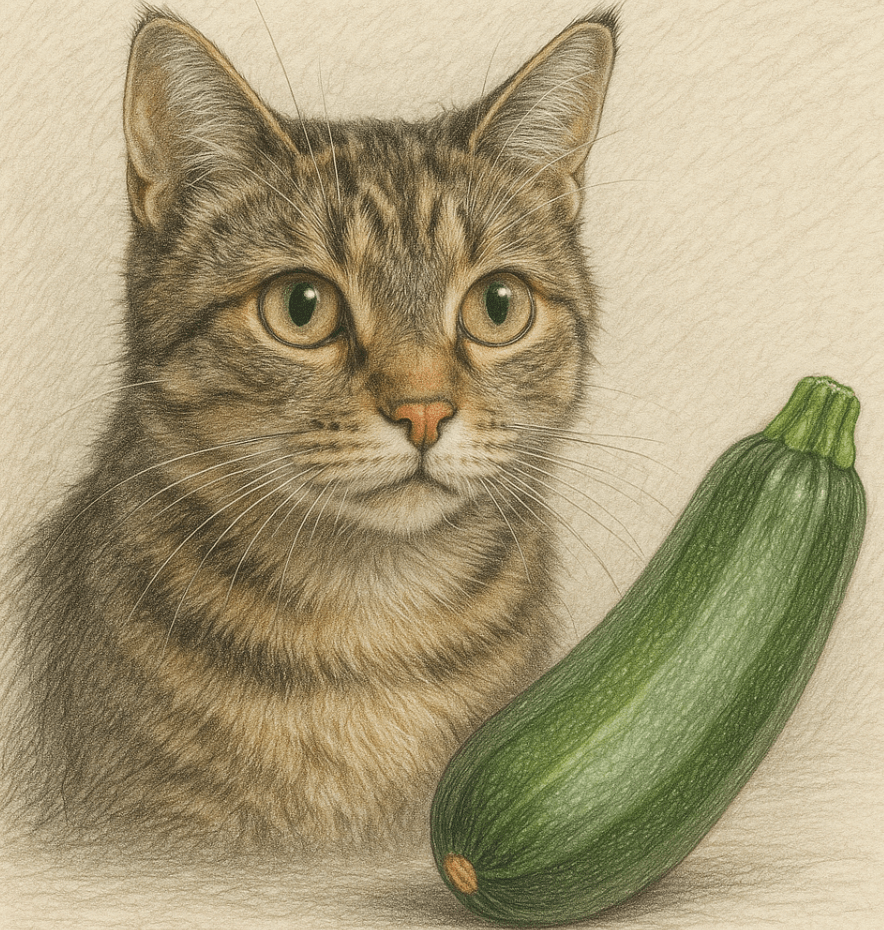
Benefits of Feeding Zucchini to Cats | Risks of Feeding Zucchini to Cats |
|---|---|
Hydrating due to high water content | Overfeeding can cause digestive upset |
Low-calorie treat for weight management | Choking hazard if served in large chunks |
Rich in fiber to aid digestion | May lead to nutrient imbalance if overused |
Non-toxic and safe for occasional use | Cats may reject it due to taste preferences |
Can diversify their diet slightly | Raw zucchini may be harder to digest |
Signs Your Cat May Not Tolerate Zucchini
While most cats tolerate zucchini well, some may experience adverse reactions. Watch for these signs to determine if zucchini agrees with your cat.
Vomiting or Diarrhea:
These symptoms indicate digestive distress, suggesting your cat may not handle zucchini well.Loss of Appetite:
If your cat refuses to eat after trying zucchini, it might not appeal to their taste buds.Excessive Gas or Bloating:
Increased flatulence or bloating could signal difficulty digesting the vegetable.Lethargy or Discomfort:
Signs of sluggishness or discomfort may indicate an allergic reaction or intolerance.Choking or Gagging:
Large or improperly cut pieces of zucchini can pose a choking risk, especially for smaller cats.
If you notice any of these signs, discontinue feeding zucchini and consult your veterinarian for guidance.
Alternatives to Zucchini for Cats
If your cat doesn’t enjoy zucchini or you’re looking for other safe vegetable options, there are plenty of alternatives to consider. These vegetables can provide variety and enrichment to your cat’s diet.
Pumpkin (Plain, Unsweetened):
Pumpkin is rich in fiber and can help with digestive issues like constipation or diarrhea.Carrots (Cooked):
Cooked carrots are a safe, crunchy treat that many cats enjoy in moderation.Green Beans (Plain):
Green beans are low in calories and packed with vitamins, making them a healthy snack option.Peas (Cooked):
Peas are another safe vegetable that can add texture and flavor to your cat’s meals.Cucumber (Plain):
Cucumber is hydrating and refreshing, though some cats may prefer its mild taste over zucchini.
These alternatives allow you to experiment with different vegetables while keeping your cat’s diet varied and interesting.
Common Mistakes to Avoid When Feeding Zucchini to Cats
Feeding zucchini to your cat requires care to avoid mistakes that could harm their health. Here are some pitfalls to watch out for.
Adding Salt or Spices:
Seasonings like salt, garlic, or onion powder can be toxic to cats and should never be used.Offering Large Portions:
Too much zucchini can upset your cat’s stomach and disrupt their nutrient intake.Serving Raw Without Testing Tolerance:
Some cats struggle to digest raw vegetables; start with small, cooked portions instead.Replacing Meat-Based Meals:
Zucchini should complement—not replace—the protein-rich diet cats need to thrive.Ignoring Allergic Reactions:
If your cat shows signs of allergies, stop feeding zucchini immediately and seek veterinary advice.
Avoiding these mistakes ensures your cat enjoys zucchini safely and comfortably.
Nutritional Profile of Zucchini for Cats
While zucchini isn’t a dietary necessity for cats, it does offer some nutritional components that can benefit them in small amounts. Understanding its profile helps you decide whether to include it in their diet.
Low in Calories:
Zucchini’s minimal calorie content makes it a guilt-free treat for cats watching their weight.High in Water Content:
At approximately 95% water, zucchini can help keep your cat hydrated, especially during warm weather.Source of Fiber:
The fiber in zucchini supports gut health and aids in maintaining regular bowel movements.Contains Vitamin A:
Though cats metabolize vitamin A differently, zucchini provides a small boost for skin and coat health.Lacks Essential Proteins:
As a plant-based food, zucchini lacks taurine and other proteins critical for feline health.
While zucchini isn’t nutritionally complete, its mild benefits make it a harmless occasional treat.
Creative Ways to Introduce Zucchini to Your Cat
If your cat is hesitant to try zucchini, these creative methods can make it more appealing. Experiment to find what works best for your feline friend.
Mix with Wet Food:
Blend small pieces of cooked zucchini into their wet food to mask the taste and texture.Freeze for Texture Variety:
Freeze tiny zucchini chunks and offer them as a cool, crunchy snack during hot weather.Puree for Easy Digestion:
Pureeing cooked zucchini makes it easier to mix into meals or serve as a standalone treat.Use as a Puzzle Toy Reward:
Place zucchini pieces inside treat-dispensing toys to encourage exploration and play.Pair with Catnip:
Sprinkle a bit of catnip on top of zucchini to entice curious cats who may otherwise ignore it.
These strategies can help make zucchini a fun and engaging part of your cat’s diet.
Frequently Asked Questions About Cats and Zucchini
How much zucchini can I give my cat?
Limit zucchini to a teaspoon or two per serving, no more than once or twice a week.
Can kittens eat zucchini?
Yes, but introduce it gradually and in very small amounts to avoid digestive upset.
Is raw zucchini safe for cats?
Raw zucchini is safe but harder to digest; cooking it makes it easier on their stomachs.
Will zucchini help my overweight cat lose weight?
As a low-calorie treat, zucchini can supplement a weight management plan but shouldn’t replace a balanced diet.
What should I do if my cat eats too much zucchini?
Monitor for signs of digestive upset and contact your vet if symptoms persist or worsen.
Incorporating Zucchini into Your Cat’s Diet Responsibly
Zucchini can be a safe and hydrating treat for cats when offered in moderation and prepared properly. While it doesn’t provide essential nutrients for obligate carnivores, it can serve as a healthy, low-calorie snack to diversify their diet. Always observe your cat’s reaction to new foods and consult your veterinarian if you’re unsure about introducing zucchini or other vegetables. By prioritizing your cat’s health and preferences, you can ensure they enjoy a balanced and satisfying diet.
Is the Rubber Tree Cat Safe? Best 7 Expert Tips! Discover expert advice on keeping rubber plants safely in cat-friendly homes and learn top tips for pet-safe plant care.
Low Red Blood Cell Count in Cats: Best 7 Expert Tips! Discover causes, symptoms, and treatment options for feline anemia. Learn how to support your cat’s health effectively with expert advice.
Understanding Megacolon Treatment: Best 7 Expert Tips! Discover effective strategies to manage feline megacolon, from dietary changes to surgical options, ensuring your cat’s comfort and long-term health.
How to Register a Therapy Cat: Best 7 Expert Tips! Discover essential steps to certify your cat as a therapy animal, prepare them for training, and make a meaningful impact in therapeutic settings.

